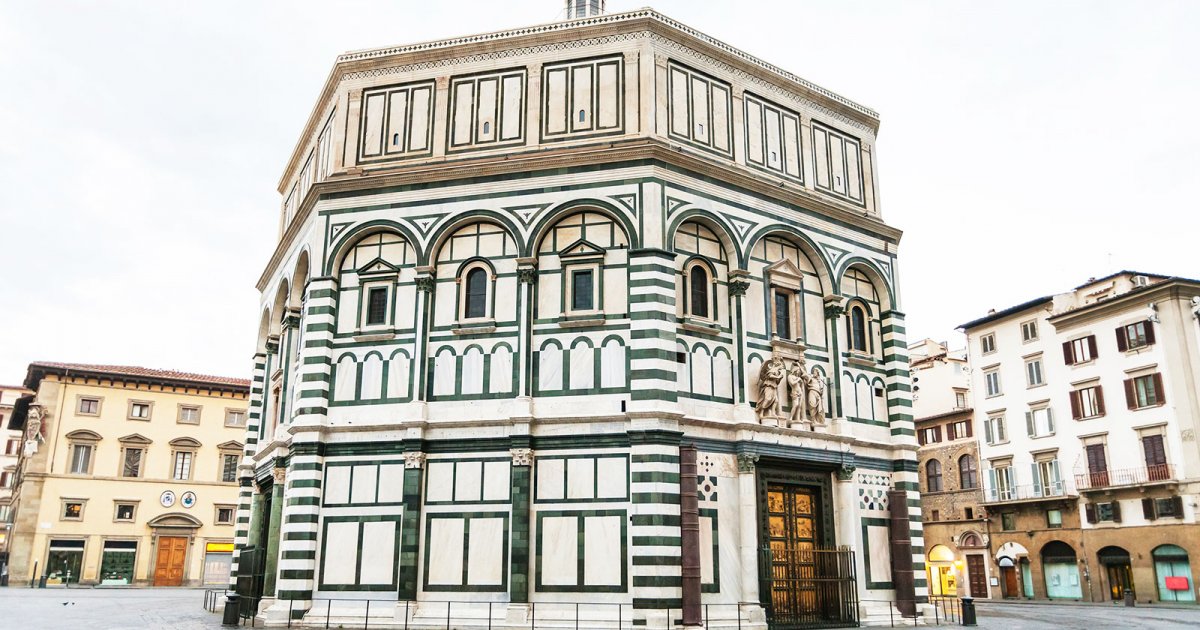CATHEDRAL, Baptistery - Exterior
 Language: English / USA
Language: English / USA
The Cathedral's great dome is Florence's architectural symbol worldwide: but to the Florentines and from Dante onwards, the monument that sums up the city's identity is definitely the Baptistery. The octagonal building in front of you was built on Roman foundations and is isolated and clearly visible from all sides: it is a model of geometric perfection, rationality, and pure beauty.
Although it is much older, the baptistery you see today has the same appearance as it did in the Romanesque period, between the years 1000 and 1200.
In recent years it has been completely cleaned and restored, and today it truly shines like a jewel. As you can see, it has a pyramid-shaped roof, and the protrusion you can see on the side opposite the Cathedral was added at the beginning of the 1200s to provide space for the altar inside. All the façades are divided into three horizontal bands, and the white and green marble slab coating is a purely geometric decorative masterpiece that is both tied to the memory of classical antiquity and at the same time will become the starting reference point for the future Tuscan Renaissance.
As you can see, the Baptistery has three monumental portals closed with beautiful bronze double doors: the statues and the doors are very accurate copies, while the originals are exposed in an extraordinarily spellbinding manner in the Cathedral Museum just behind the Cathedral.
The east door facing the Cathedral is the most famous and was defined by Michelangelo as the "Gates of Paradise". I suggest you slowly take in its ten gilded bronze panels one by one; they show episodes from the Old Testament, set in large buildings that are depicted in perspective. They were done by the great sculptor and goldsmith Lorenzo Ghiberti, as well as the twenty-eight panels in the door to your right, the north door, which you'll walk through to enter the Baptistery. The two doors took their creator more than half a century to complete, more or less the first half of the 15th century. The oldest door is on the south side and is from the first half of the 14th century.
FUN FACT: take a close look at Adam and Eve depicted at the base of the frame of the south door. Notice how Adam is surrounded by positive plants and animals, while Eve has all the attributes of witches, and in fact beside her you can see the hallucinogenic plants that were used to produce the drug called "witches' oil", and the jar that contains it.



